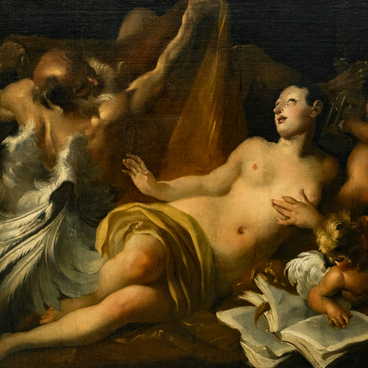The art collection of the Sakha Republic National Art Museum contains a painting by an unknown artist of the Caravaggio circle “Still Life with Flowers, Grapes, and a Melon.”
In the 17th century, the genre of still life became a unique way of emotionally perceiving the world and at the same time represented the fusion of a pictorial concept, symbol, and subtext. Still lifes were then little appreciated and considered a minor genre of painting. However, the work of Caravaggio, who is considered a precursor to still life in the Baroque style, changed the attitude towards the genre. He was the first to apply a technical method in still life painting that created an illusion of the tangible, but in fact non-existent. Caravaggio influenced the development of European painting as a whole, making nature the main expressive language in art.
Caravaggism is a style of the Baroque era, named after Caravaggio, the artist-reformer and the founder of realism. He had his followers known as Caravaggisti, who adopted his stylistic techniques.
The painting from the museum’s collection presents a lavish composition with abundant gifts of nature. Fruits, a glass vase with flowers and water are depicted in close-up, occupying most of the space; their outlines sharply defined against a dark neutral background. This still life exhibits characteristic traits of Caravaggism — a close-up, rendering of texture and subtle details, and contrasts of light and shadow. Attention is drawn to the vibrant painterly language, naturalism and careful execution of the details, as well as the effect of transparency, especially noticeable in the vase and grapes. The artist perfectly conveys the features of various textures: the wooden surface of the table, the gleam and transparency of glass, the shimmering juice-filled grapes of different varieties, and the ripe juicy fruits — everything reminds of movement and the internal energy of existence.
The simple motif of the still life is imbued with
an earthly sense of beauty and inner significance. Scattered yellow, green,
red, and blue tones create a sense of abundance, yet despite this blooming
splendor, traces of wilting are noticeable on the fallen but still beautiful
flower petals. There is a slight crumpling of delicate white flowers, a branch
helplessly hangs over the edge of the table, and the physical sweetness and
weight of slices of already cut watermelon and quince are palpable. The still
life reflects the artist’s contemplations about the impermanence of earthly
existence and the transience of life, which are subtly echoed in the restless
play of light and shadow.


